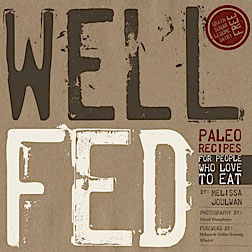Last summer, I told Farmer Chuck — the king of everything delicious at our CSA Sunrise Farm — that the onions we'd been getting in our basket were...
Read MorePower to the Veggies! Down with the Grains!
In case you were looking for another reason to eliminate those pesky (delicious, but pesky) grains from your diet, I just found an article from Reuters entitled “Glycemic load of diet tied to breast cancer risk,” and it’s making me glad I’ve started paying so much attention to my sugar consumption.
Get down with your bad self and your good carbohydrates sources! … and kick those nasty grains and sugar to the curb.
Do it! You deserve to live a long, healthy, happy life. Before you read the article, you might be asking yourself, “What’s the difference between ‘glycemic index’ and ‘glycemic load’?” I mean, I wasn’t totally clear on the difference. So I did what any Web- and word-nerd would do: I went to Wikipedia. Here’s what I learned:
Before you read the article, you might be asking yourself, “What’s the difference between ‘glycemic index’ and ‘glycemic load’?” I mean, I wasn’t totally clear on the difference. So I did what any Web- and word-nerd would do: I went to Wikipedia. Here’s what I learned:
Glycemic index: The glycemic index, glycaemic index, or GI is a measure of the effects of carbohydrates on blood sugar levels. Carbohydrates that break down quickly during digestion, releasing glucose rapidly into the bloodstream, have a high GI; carbohydrates that break down more slowly, releasing glucose more gradually into the bloodstream, have a low GI. For most people, foods with a low GI have significant health benefits.
Glycemic load: The usefulness of glycemic load is based on the idea that a high glycemic index food consumed in small quantities would give the same effect as larger quantities of a low glycemic index food on blood sugar.
Now here’s the story from Reuters:
NEW YORK (Reuters Health) – The amount of carbohydrates a woman eats, as well as the overall “glycemic load” of her diet, impact her chances of developing breast cancer, Swedish researchers report.
The concept of glycemic load is based on the fact that different carbohydrates have different effects on blood sugar. White bread and potatoes, for example, have a high glycemic index, which means they tend to cause a rapid surge in blood sugar. Other carbs, such as high-fiber cereals or beans, create a more gradual change and are considered to have a low glycemic index.
Dr. Susanna C. Larsson of Karolinska Institute in Stockholm and colleagues analyzed data on 61,433 women who completed “food frequency” questionnaires in the late 1980s.
Over the course of about 17 years, 2952 women developed breast cancer and, according to the investigators, glycemic load “was significantly positively associated with risk of overall breast cancer.” Women with higher glycemic load diets were more apt to develop breast cancer.
In addition, carbohydrate intake, glycemic index and glycemic load were all positively associated with risk of a certain type of breast tumor – namely, estrogen receptor (ER)-positive/progesterone receptor (PR)-negative breast cancer.
Women with the highest “glycemic index diet” had a 44% increased risk of developing ER+/PR- breast cancer compared to women with the lowest glycemic index diet.
Women in the highest category of “glycemic load” had an 81% increased risk of ER+/PR- tumors, and those with the highest carbohydrate intake had a 34% increased risk, compared to those in the lowest groups.
The investigators speculate that high-glycemic load diets may boost breast cancer risk by increasing concentrations of insulin and sex hormones in the body, which may contribute to the development and spread of breast cancer cells.
The findings support the benefits on breast health of a diet high in healthy “low glycemic index” foods. (SOURCE: International Journal of Cancer, July 2009.)
Want to learn more?
Wikipedia on Glycemic Index
Wikipedia on Glycemic Load
Glycemic index and glycemic load for 100+ foods (Harvard Medical School)
More Like This...
I was working on updating a classic American recipe for my Paleo Magazine column this weekend and realized I had no idea how to properly prepare...
Read More



